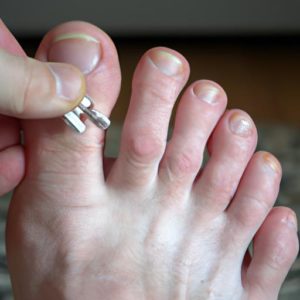Table of Contents
Causes of Yellow Toenails
Yellow toenails can occur due to various factors, including fungal infections, nail trauma, and underlying health issues. Fungal infections are the most common cause, where fungi enter through cracks or cuts, causing discoloration, thickening, and brittleness of the toenail. Nail trauma from injuries or tight shoes can also lead to yellow toenails. Health problems like diabetes, psoriasis, and thyroid issues can affect blood flow, resulting in discolored toenails.
Understanding the causes is crucial for determining the appropriate treatment.
Prevention of Yellow Toenails
Preventing yellow toenails involves maintaining proper foot hygiene, taking protective measures, and addressing underlying health conditions. Start by washing your feet daily with soap and water, making sure to dry them thoroughly, especially between the toes. Keep your toenails trimmed to prevent dirt and bacteria accumulation. Moisturize your feet to avoid dry skin and potential infections.
Choosing suitable footwear is vital to prevent trauma. Ill-fitting shoes can cause discoloration, thickening, and pain in toenails, along with blisters and calluses that hinder foot hygiene. Regular check-ups and managing conditions like diabetes and thyroid problems are essential for overall foot health.
By following these preventive measures, you can significantly reduce the risk of developing yellow toenails.
Proper Foot Hygiene for Prevention
To prevent yellow toenails, practice good foot hygiene. Ensure that you wash your feet daily using soap and water, paying extra attention to drying them thoroughly, especially between the toes. Regularly trim and file your toenails to prevent dirt and bacteria from accumulating. Moisturize your feet to prevent dry skin, which can lead to cracked skin and infections.
Protective measures are also crucial. Choose appropriate footwear that fits well and provides adequate support. This prevents trauma to the toenails that can result in discoloration, thickness, and pain. Avoiding injury and wearing tight shoes will help in preventing yellow toenails.
Maintaining your health is essential in preventing yellow toenails. Regular check-ups with a doctor can identify potential health issues like diabetes and thyroid problems that may contribute to discoloration. Managing these underlying conditions can effectively prevent yellow toenails.
By adopting these preventive measures, you can significantly reduce the likelihood of developing yellow toenails.
Diagnosis of Yellow Toenails
Diagnosing yellow toenails involves a physical examination and, if necessary, laboratory tests. During the examination, your doctor will inspect your toenails and inquire about your medical history. They may also ask about any accompanying symptoms such as pain or itching.
Laboratory tests, such as a nail culture, can identify the specific fungus causing the infection. In some cases, a nail biopsy may be required to rule out other conditions like psoriasis or thyroid problems.
Seeking medical advice is crucial if you have yellow toenails. Your doctor will determine the cause and recommend the appropriate treatment.
Treatment of Yellow Toenails
The treatment for yellow toenails depends on the underlying cause. Antifungal medications, either topical or oral, are commonly prescribed for fungal infections. Topical medications are applied directly to the affected area, while oral medications are taken by mouth. In severe cases, toenail removal may be necessary to treat the infection.
Home remedies like tea tree oil, vinegar, and baking soda can also be used to treat fungal infections. These remedies can be applied topically or used as foot soaks. However, it’s important to note that home remedies may not be as effective as prescribed medications.
Nail trauma can be treated with antibiotics or antifungal creams, depending on the cause. Applying ice packs and elevating the affected foot can provide additional relief.
Health issues like diabetes and psoriasis require medication prescribed by a doctor. Thyroid problems may necessitate thyroid replacement therapy to regulate hormone levels.
Conclusion
Understanding the causes, prevention, diagnosis, and treatment of yellow toenails is vital for maintaining optimal foot health. By practicing good foot hygiene, taking protective measures, and managing underlying health problems, you can minimize the chances of developing yellow toenails. Consult your doctor for proper diagnosis and treatment if you have concerns about the appearance of your toenails. With the right care and treatment, you can ensure healthy and beautiful toenails.






